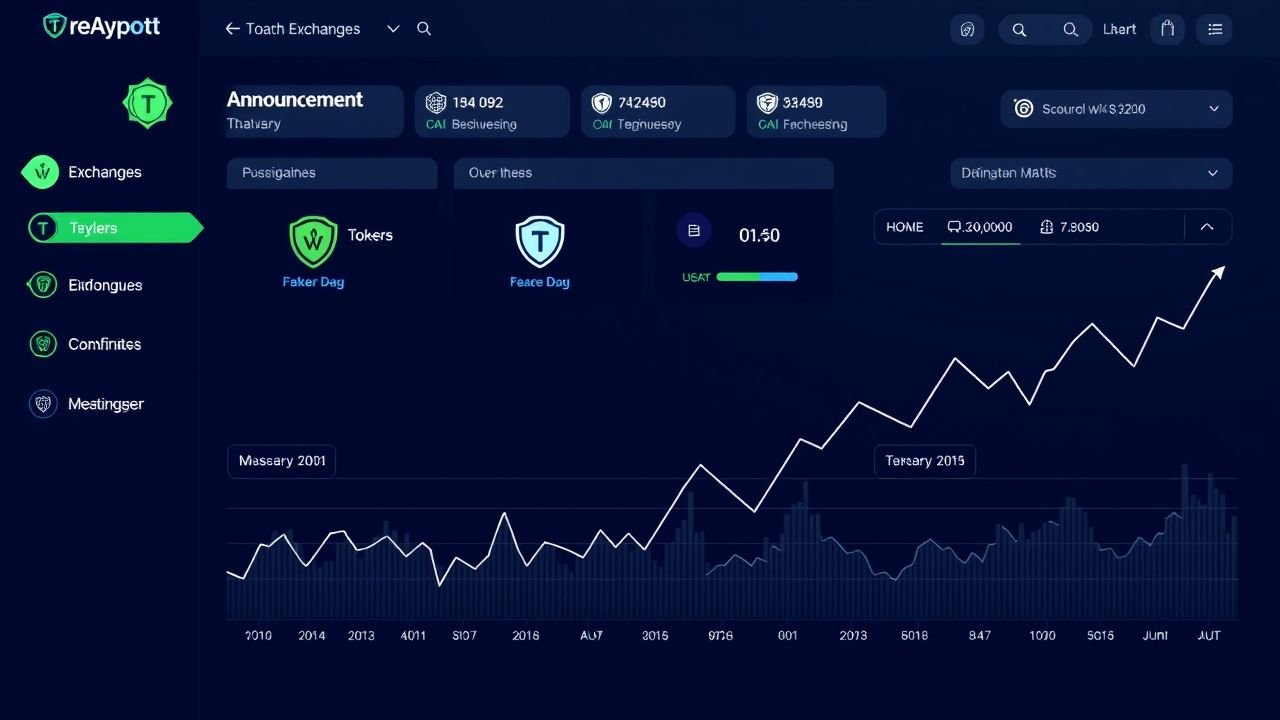The cryptocurrency industry has made significant strides in technology, adoption, and regulatory clarity over the past decade. However, despite these advancements, security breaches remain one of the most pressing challenges faced by crypto exchanges in 2025. High-profile hacks continue to shake investor confidence, cause financial losses, and highlight vulnerabilities that need urgent attention.
This article dives deep into the most notable crypto exchange security breaches that have occurred in 2025, analyzing the methods used by attackers, the weaknesses they exploited, the responses from affected exchanges, and the broader regulatory and industry impacts. We also explore the enhanced security measures exchanges have adopted since and provide practical advice for investors to safeguard their assets.
As digital assets grow in value and popularity, understanding the evolving security landscape is critical for anyone engaged in crypto trading or investing.
1. Summary of Major 2025 Exchange Hacks
1.1 Exchange X – The $150 Million Hot Wallet Breach
In early 2025, Exchange X suffered one of the largest breaches of the year when hackers infiltrated its hot wallet infrastructure, siphoning approximately $150 million worth of various cryptocurrencies. The attack was carried out using a sophisticated phishing campaign combined with a zero-day exploit in the exchange’s wallet management software.
1.2 Exchange Y – Insider Threat and Credential Leak
Midway through the year, Exchange Y disclosed a security incident involving an insider who leaked privileged credentials to an external hacking group. This resulted in unauthorized withdrawals amounting to $75 million, mainly affecting Bitcoin and Ethereum holdings.
1.3 Exchange Z – Smart Contract Exploit on DeFi Integration
Exchange Z, which integrated decentralized finance (DeFi) lending protocols into its platform, was hit by a smart contract vulnerability exploit. Hackers drained over $30 million from the exchange’s DeFi pool, exploiting a reentrancy bug in the underlying contract.
2. Common Vulnerabilities Exploited
2.1 Hot Wallet Management Weaknesses
Hot wallets, which store cryptocurrencies connected to the internet for liquidity and trading operations, remain prime targets. Many breaches in 2025 traced back to insufficient segregation of wallet keys, poor access controls, and outdated software.
2.2 Social Engineering and Insider Threats
Attackers increasingly leverage social engineering techniques—phishing emails, spear-phishing, and phone scams—to trick employees or insiders into divulging sensitive information. Insider threats remain especially difficult to detect and prevent, requiring strict monitoring and internal controls.
2.3 Smart Contract and Protocol Vulnerabilities
With exchanges expanding into DeFi services, smart contract exploits have risen. Complex contract code, often unaudited or insufficiently tested, can contain bugs that attackers exploit for financial gain, as seen in Exchange Z’s incident.
3. Immediate Exchange Responses
3.1 User Fund Compensation
Many affected exchanges prioritized reimbursing customers to maintain trust. For instance, Exchange X announced a full reimbursement plan funded through insurance policies and reserve funds, restoring user confidence.
3.2 Forensic Investigations and Law Enforcement Collaboration
Post-incident, exchanges engaged cybersecurity firms to conduct forensic analyses to identify breach methods, recover stolen funds, and prevent recurrence. They also cooperated with global law enforcement agencies, which led to several arrests.
4. Strengthened Security Measures Post-Breach
4.1 Multi-Signature Wallets and Cold Storage Expansion
Exchanges have widely adopted multi-signature (multi-sig) wallets, requiring multiple approvals for withdrawals, and increased their use of cold wallets—offline storage inaccessible via the internet—for the bulk of funds.
4.2 AI-Driven Anomaly Detection
Artificial intelligence and machine learning tools now monitor transactions and user behaviors in real time to detect suspicious activity patterns and automatically trigger alerts or freeze assets.
4.3 Biometric and Hardware Security Integrations
Exchanges implemented biometric authentication (fingerprints, facial recognition) and hardware security modules (HSMs) for key management, adding layers of protection beyond traditional passwords and two-factor authentication (2FA).
5. Regulatory and Industry Impacts
5.1 New Compliance Mandates on Security Standards
In response to breaches, regulators globally have introduced stricter security compliance requirements, including mandatory penetration testing, regular audits, and enhanced reporting protocols.
5.2 Insurance Requirements for User Assets
Several jurisdictions now require exchanges to carry insurance covering losses from hacks, providing an additional safety net for users.
6. What Investors Should Do
6.1 Best Practices for Personal Security
- Use exchanges with strong security reputations and transparent policies
- Enable all available security features such as 2FA and withdrawal whitelists
- Avoid keeping large amounts of crypto on exchanges; use personal cold wallets
6.2 Understanding Exchange Insurance Policies
Before trading, investors should inquire about insurance coverage for assets held on the platform to assess risk exposure.
While security breaches pose ongoing risks to crypto exchanges and their users, the industry’s response throughout 2025 highlights growing maturity and commitment to safeguarding digital assets. Enhanced technology, regulatory oversight, and user education combine to form a stronger defense against future attacks.
For investors, staying informed about security practices and adopting prudent measures is essential to navigate the evolving crypto landscape safely.






